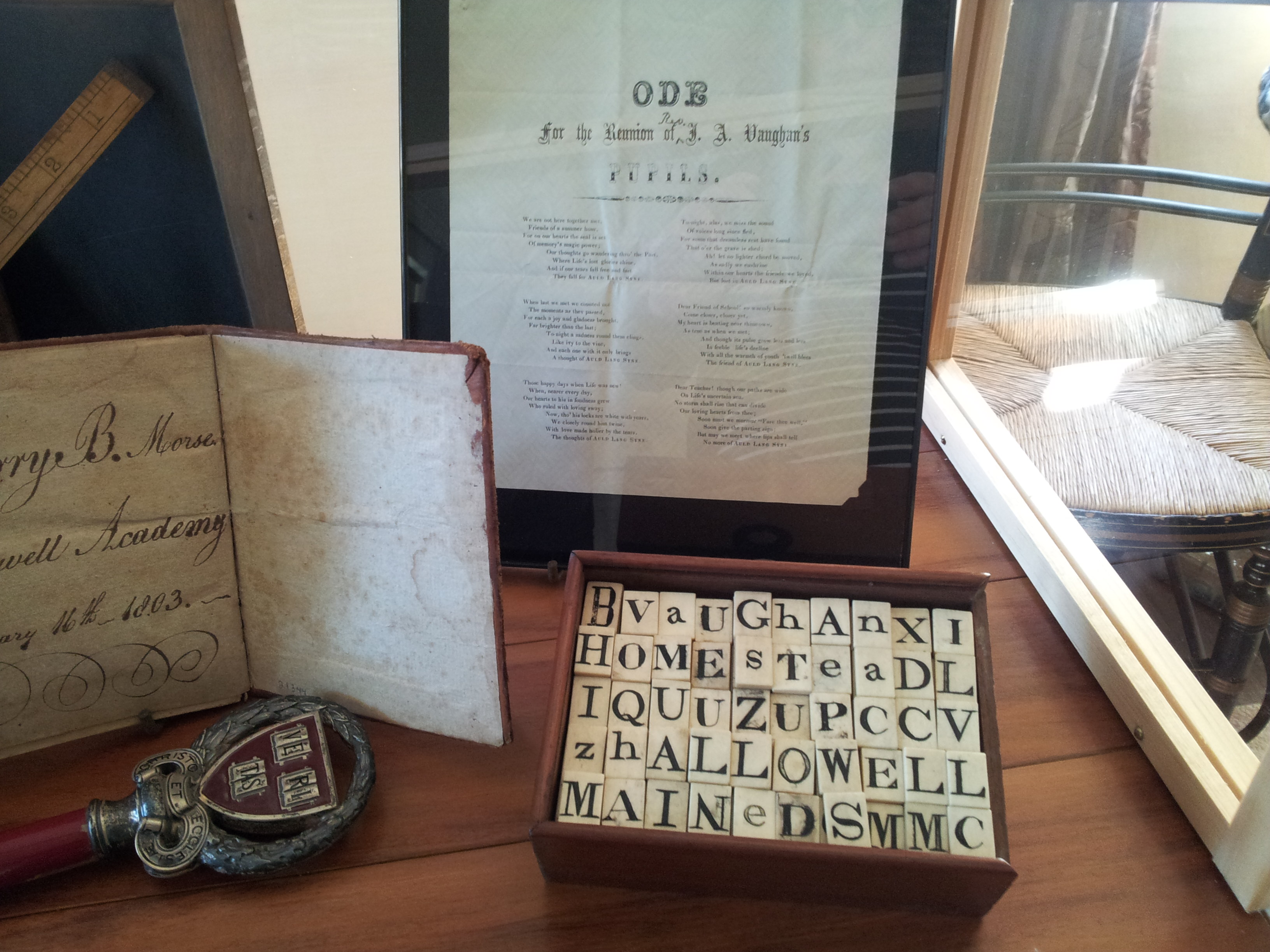We are engaged in the process of cataloging our resources inside and outside the house. Through this multi-year process, we have come to know more about the important events in the lives of the Vaughans and how these events are connected to our history as a community and a state. We are also discovering some of the mundane details of their lives; timeless ones like the name of a pet goldfish who lived in the 1870’s (“Old Pout”, in case you were wondering), and other details that clearly reflect issues and concerns of a particular time such as the Vaughan family’s safety concerns regarding the electricity that was installed in the house starting in 1914.
On the grounds of the house, there is evidence of 200 years of gardening, specimen trees, and a breathtaking view of the Kennebec River. The design of the formal gardens at the Homestead, created in the early 1890’s, was inspired by the gardens at Mount Vernon, including the gazebo. There is extensive photographic and documentary evidence of the history of the garden and general care of the grounds.
It is remarkable how much can be known about a time in which there were no digital recordings or, in some cases, photographs. It’s also sobering to think how little we may know about someone based on the evidence they leave behind. What would people know or think about you based on your photographs, your diary, e-mails, and texts? Your school work, letters you’ve received, your credit card bill, and your tax return?
Fortunately for us, the Vaughans were habitual journal keepers, letter writers, and letter savers. Volumes of their journals and thousands of letters sent or received by family members survive among the Homestead’s collections. These offer insights regarding the thoughts, emotions and activities of those who resided here, and provide a detailed chronology of their lives, literally “from womb to tomb” in some cases. This is a rare legacy that lends unusual depth and texture to the bare bones of most historical biographies. In many instances these letters and other preserved documents serve as links to specific objects found in the house, telling us where, when, how, by whom and why those objects came to be acquired.
We believe that these resources are unique among the many historic sites of Maine, and that they offer extraordinary opportunities for teaching and learning about everyday life in Maine’s past.

